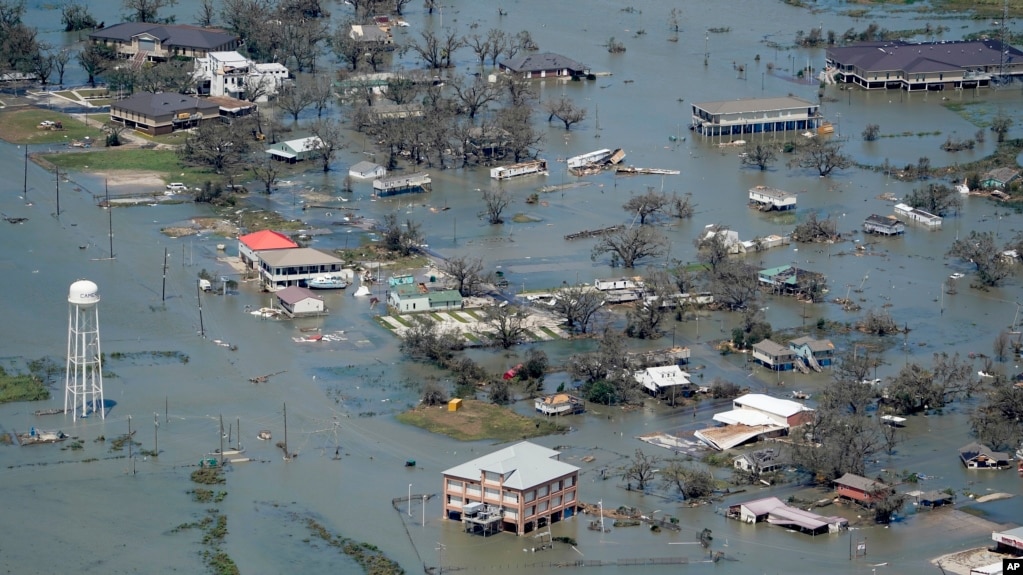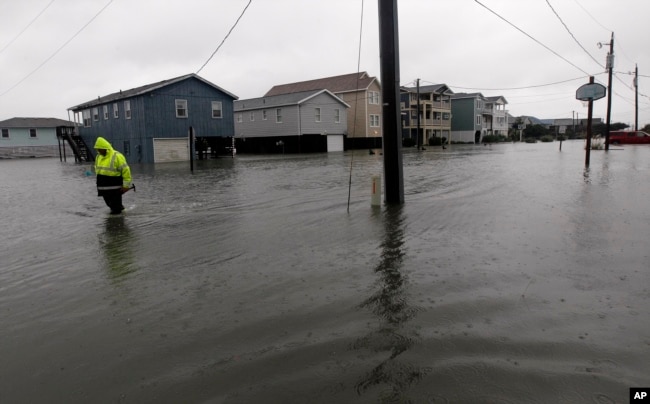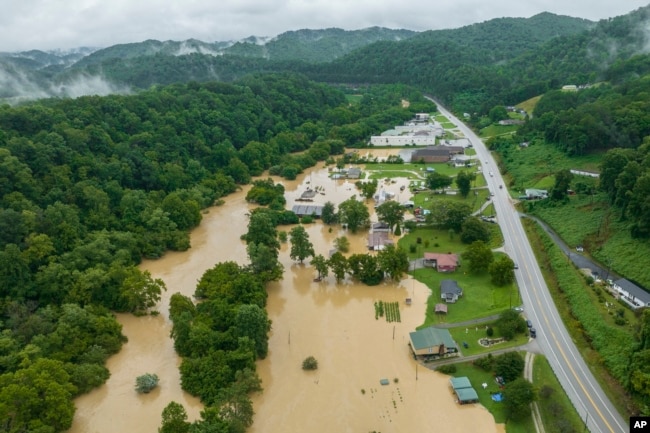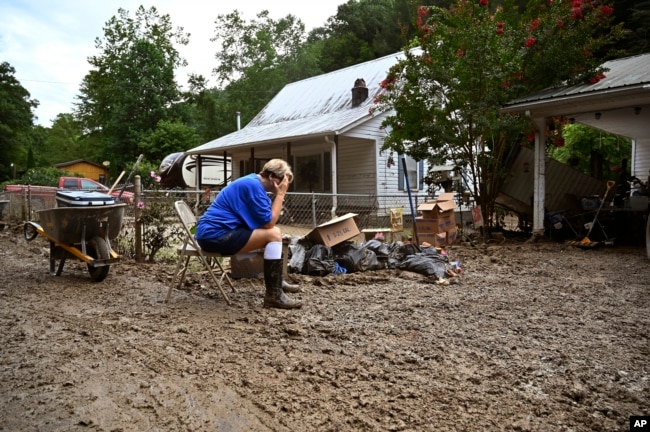AUDIO
In the US, Disasters Strike All Over the Country

When it comes to disasters in the United States, most people think of major storms and earthquakes that hit coastal areas. But a study from the nonprofit Rebuild by Design and New York University says disasters happen everywhere across the country.
The study looks at information on hundreds of federally declared disasters from 2011 to about 2021. It also examines the $60 billion that the Federal Emergency Management Agency, or FEMA, gave state and local governments.
The study finds that eight of the nine counties with the most federally declared disasters since 2011 are in Kentucky. One is in Vermont. These counties have several times the number of disasters as the national average of three in the past 13 years.
A federal disaster is declared when a bad natural event is so costly that local government officials do not believe they can recover. So, the governor of the state asks the president to declare a disaster which frees federal money set aside for this purpose.
Amy Chester is director of Rebuild by Design. She said, “California and Louisiana and I would say now even Texas, Florida, for sure, they soak up all the oxygen when you hear about these giant storms.”

Chester added, “But what you’re not hearing about are these storms that are happening all the time, and that’s just becoming ...regular to places like Vermont.” Chester also noted Tennessee, Oklahoma, Mississippi, Iowa and Alaska as having a lot of disasters.
“We want to show that climate change is already here,” Chester said of the data, which covers 2011 to 2023. It does not include heat waves, lack of rain or diseases, like COVID-19.
Before she studied the data, Chester said she thought Vermont would be safe from climate change. Instead, it has many disasters.
“It’s awful,” Chester said. “It just keeps happening to them.”
Vermont recently flooded again because of heavy rain from Hurricane Beryl.
Disasters in unexpected places
In July 2022, at least 40 people died, and 300 homes were damaged when a flood struck Floyd County in eastern Kentucky. It was the 13th time in 12 years that the federal government declared the rural county a disaster.
Judge Robbie Williams is the administrator of the county with about 35,0000 people. He said, “After that flood, I had 500 homeless people looking at me, ‘Judge what are we going to do’?” Williams added, “It’s overwhelming and it’s just a matter of time before it happens again.”
Then, in 2023, Floyd County was declared a disaster again for the 14th time since 2011. But Floyd County is not the nation’s most disaster-prone county. Neighboring Johnson County has had 15 disasters declared by FEMA.

Floyd County’s government received more than $35 million in FEMA disaster aid since 2011. But that is not a lot of money compared to other counties hit by hurricanes.
Five counties received more than $1 billion in FEMA aid. Three of them are in New York state. They are led by Manhattan’s New York County, which got $8.9 billion after being struck by Hurricane Sandy in 2012.
FEMA notes that flooding is the most common disaster in the U.S. Since 2011, FEMA has paid more than $41 billion in aid following hurricanes, the most of any kind of disaster.
Susan Cutter is with the Hazards Vulnerability and Resilience Institute at the University of South Carolina. Cutter said: “What the data tell us is that the frequency and severity of disasters at local-state scales is increasing with rural, suburban, and urban places being affected nationwide.” She was not involved in Chester’s research. But she added, “More needs to be done.”
Geography and regulations
In Floyd County, Judge Williams said geography and government regulations make it tough for the area. The county is in the mountains. People live in the narrow valleys, he said. When it rains, the creeks and rivers overflow.
“We’re seeing historic levels of flooding,” Williams said. “It’s only getting worse.”

Environmental regulations bar local officials from dredging the creeks. Silt from the mountains keeps building up, Williams said. Some creeks were about six meters deep but are now shallow enough to walk across, he said.
"The problem is there is nowhere for the rain to go,” Williams said.
Samantha Montano is a professor of emergency management at the Massachusetts Maritime Academy. Montano said what is more important is how state and local policies create or reduce the risk of future disasters.
In Floyd County, the local government is using FEMA money to buy the homes of 150 residents to move them out of a flood area, but some do not want to leave, Williams said.
“Until we get those homes out of these flood ways…we’re still going to have these issues,” Williams added.
_____________________________________________
Words in This Story
county –n. an area in a state that has its own local government
overwhelming –adj. an amount too big to deal with effectively
scale –n. a level or size of something in relation to other, similar things that are bigger or smaller
regulation –n. a rule or law that governs a kind of activity or industry
disaster-prone –adj. likely to have a disaster
dredging –n. the process of removing mud from the bottom of a river or canal to make it deeper so boats can pass
silt –n. dirt that is carried by rivers and streams to lower areas of land
management –n. the effort of overseeing and controlling a business, government office or organization
creek –n. a small stream
shallow –adj. not deep
https://learningenglish.voanews.com/a/in-the-us-disasters-strike-all-over-the-country/7712635.html